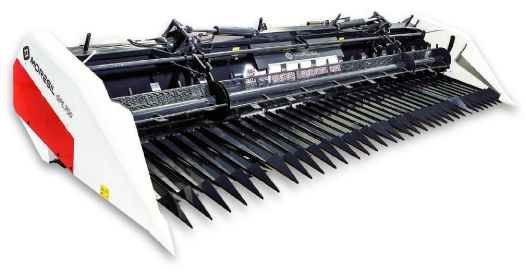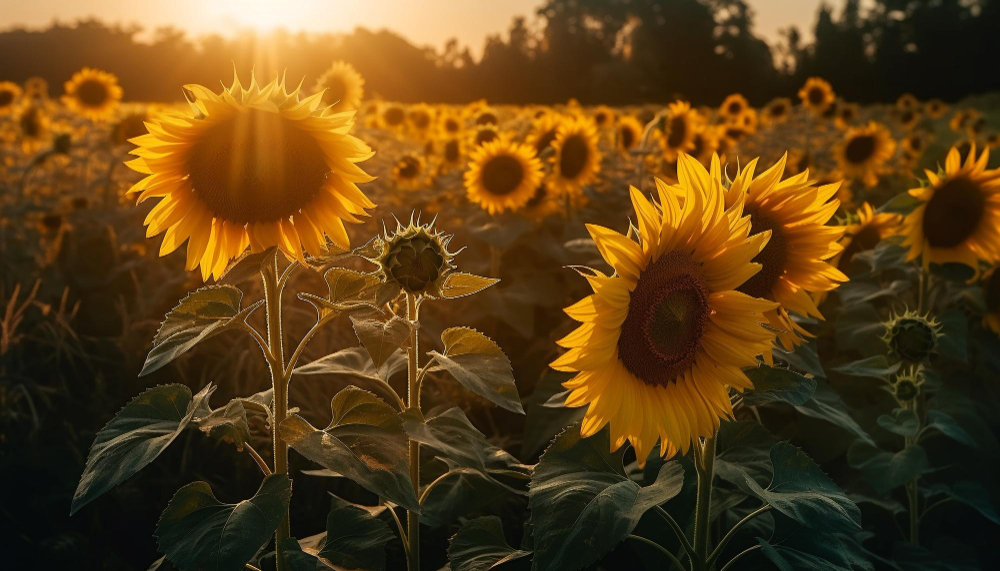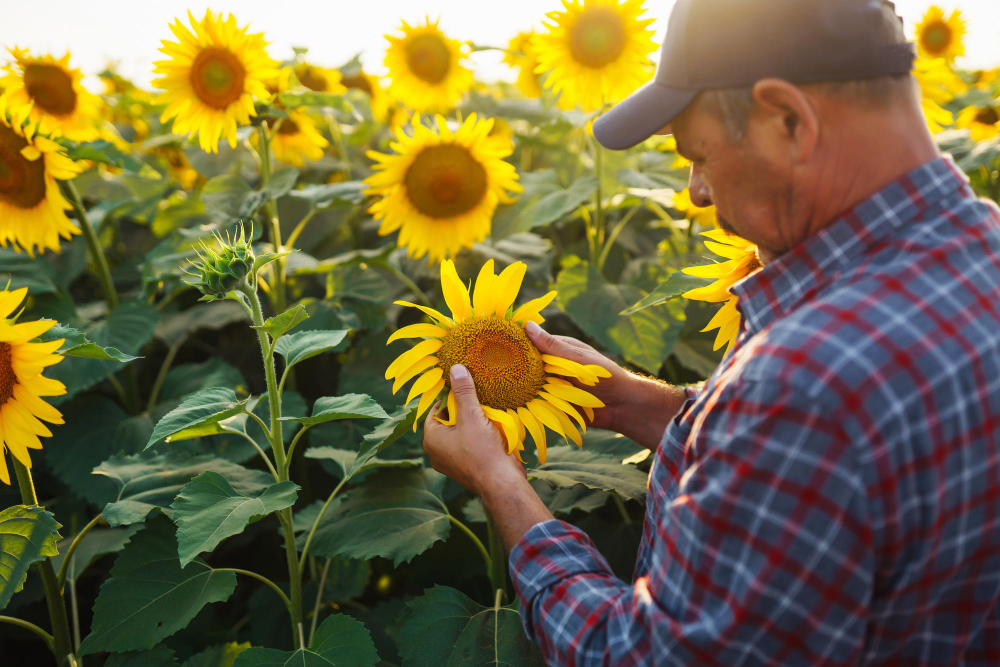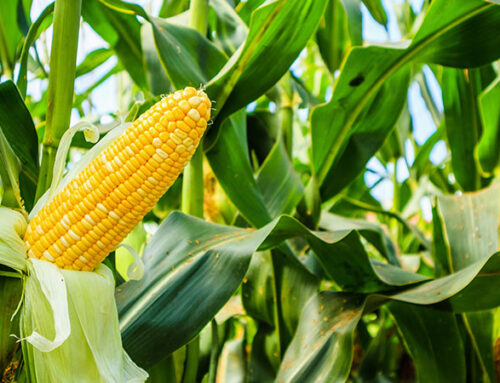The manufacturing process of sunflower seeds involves several steps, from harvesting and seed processing to the final packaging.
In today’s article, we will briefly explain how sunflower seeds are manufactured. Let’s get started.
When To Harvest Sunflower Seeds?
Sunflower seed harvesting typically takes place when the sunflower heads have fully matured. You can identify maturity through various visual and tactile signs. Here are some key indicators to determine the right time for harvesting sunflower seeds:
- Head color: Sunflower heads change color as they mature. When the seeds are ready for harvest, the heads turn a yellow or golden hue, and the bracts (flower petals) around the edge of the head may start to wither and turn brown.
- Flower loss: As the seeds mature, the flowers in the center of the head may naturally fall or detach. This is a sign that the seeds are ready for harvesting.
- Well-formed seeds: Mature sunflower seeds inside the heads become larger and fuller. You can check the size and plumpness of the seeds by lightly touching the back of the head.
- Outer shell: The shell surrounding the seeds also changes as they mature, becoming firmer and more resistant as the seeds reach maturity.
- Hollow sound: When you touch sunflower heads and gently tap the seeds, you will hear a hollow sound when the seeds are mature and ready for harvest.
- Growing time: The harvest timing also depends on the sunflower variety you are cultivating and the climate of your region. Sunflower seeds typically mature in 80 to 120 days from planting, but this period can vary.
It’s important to note that the machinery used for sunflower seed harvesting must be of high quality. The combine harvester should have a sunflower harvester that can adapt to different planting distances and crop heights. Furthermore, it should be versatile in harvesting, easy to maintain, and durable. If it offers additional advantages like our sunflower header even better. You can choose a version that folds with our patented sickle-locking system, allowing you to decide whether to include a shredder for sunflower stems and a height indicator.

Watch here our model GB of sunflower header
What Are Sunflower Seeds Used For?

Sunflower oil is a highly popular vegetable oil in the United States. While in many countries, sunflower seeds are consumed raw as snacks or in salads, they can also be crushed to extract oil. It is widely used in frying and in various baking and cooking recipes.
Sunflower seeds, scientifically known as Helianthus annuus L, are rich in oil. They are small, whitish to brownish fruits with an aromatic, nut-like flavor. Sunflower oil extraction methods include pressing and using chemical solvents like hexane.
This oil is valued for its higher content of polyunsaturated fatty acids, making it a healthier choice for cooking. It’s also rich in vitamin E, an antioxidant. Sunflower oil is cholesterol-free and doesn’t impact cholesterol levels.
In North Dakota and South Dakota, where sunflower cultivation is prevalent, sunflower harvesters equipped with sunflower headers are essential for efficient harvesting. Sunflower harvesting equipment should be adaptable to planting distances and crop heights, easy to maintain, and durable.
Sunflower oil is a sought-after product in developing countries for its health benefits and affordability compared to other cooking oils. Its properties make it a versatile and valuable ingredient in various cuisines and food products, further boosting its demand in the region.
How Are Sunflower Seeds Processed?
To produce sunflower seeds suitable for human consumption, several steps must be followed.
First, the sunflower seeds are harvested, then they are dried and roasted to enhance their flavor and texture (although for some uses, they may need to remain untoasted). As for the shell, it can either be left on or removed, with the latter being a common choice for some food companies that include sunflower seeds in products like bread.
Additionally, you can salt and/or flavor the sunflower seeds. Next comes the sorting process, where defective or damaged seeds are removed. Finally, the seeds are packaged, distributed, and sold.
However, it’s essential to note that this process may vary depending on the manufacturer and market preferences. In essence, the goal is to transform raw sunflower seeds into a crispy, tasty, and ready-to-eat product.
How Are Sunflower Seeds Dried?
The sunflower seed drying process is crucial for reducing moisture in the seeds and preventing the growth of mold and bacteria during storage. It is typically done as follows:
- Harvest and initial cleaning: After harvesting sunflower heads and separating the seeds, an initial cleaning step is essential to remove any plant debris, dust, or other impurities that may be present in the seeds.
- Spread in thin layers: The seeds are spread out in thin layers on flat, clean surfaces such as trays or screens. This allows for better air circulation and facilitates the drying process.
- Ventilation and aeration: Sunflower seeds are placed in a cool, dry area with good ventilation to allow air to circulate around the seeds. This helps remove moisture gradually.
- Temperature and humidity control: Effective drying requires control of temperature and humidity in the environment. A low relative humidity and moderate temperatures are sought to prevent seed damage due to excessively rapid drying or extremely high temperatures.
- Monitoring & rotation: During the drying process, it’s essential to regularly monitor the seeds to ensure uniform drying and prevent over-drying in certain areas. Seeds can be rotated or trays moved to ensure even drying.
- Drying duration: The drying process duration may vary depending on local conditions and seed size. Typically, sunflower seeds are dried for several days until they reach the desired moisture level, which is usually around 10% to 15%.
- Moisture testing: To ensure the sunflower seeds are completely dry, moisture testing can be conducted using specific equipment such as moisture meters. These devices help determine whether the seeds have reached the target moisture level.
- Proper storage: Once sunflower seeds have reached the desired moisture level, they should be stored in airtight containers in a cool, dry place to maintain their quality for an extended period.
The drying process may vary based on local conditions, production scale, and available equipment. The primary goal is to ensure sunflower seeds are dried uniformly and safely for subsequent processing and consumption.
If you’re looking for a sunflower header for your combine harvester, as mentioned earlier, take a look at our Sunflower Header. At Moresil, we’ve been assisting our customers for over 70 years, and you could be the next to enjoy the benefits of having the best machinery for sunflower harvesting.
Contact us if you need help to choose the correct Specialized agricultural machinery you need.




